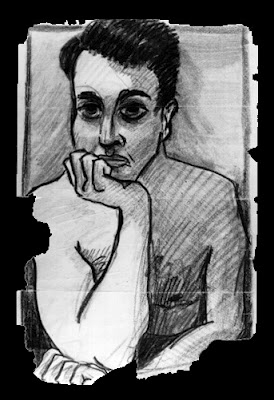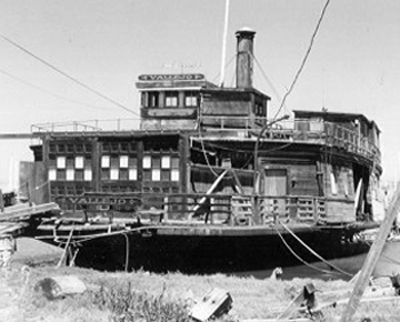Three Correlations
Jess & Duncan
Otomo – Silv – Hughes
February 2014
When Academia takes on the subject of something that developed non-intentionally, non-systematically, organically, such as the development of “a creative circle,” it’s always already in the past tense and is given a veil of “Natural History” of some kind. This Grey Art Gallery’s An Opening of the Field: Jess, Robert Duncan, and Their Circle falls into the same fate. Nonetheless, what a pleasure to go through the show! Like Semina Culture: Wallace Berman and his Circle (2007) that took place in the same space, it gives a rare opportunity for us to examine the creative activities of West Coast artists.
Ironically, for some reason, although there are some merging points and personals, the creative activities of both coasts are divided by the big space of the continent. So, most of West Coast history never really reaches the general public’s eyes here. It is always a welcome gift to see this type of show.
I walked through it without any particular focus in my mind, but to let my eyes catch something “fresh.” Fascinating to realize that my eyes caught mostly Robert Duncan’s visual works. Dancing Salamanders (1953); Self-Portrait with Shadow (1946); Wallpaper Design (1952-54); Untitled (1946) and A Winter Sun Yet Dark (1950). Mostly done with wax crayon on paper except A Winter Sun… which was done with watercolor and gold paint. Wax crayon on paper was my first medium as I started doing visual work like most kids do. I enjoyed seeing this common medium create his free wheeling automatic drawings as Jess explained on Wallpaper Design- “He built it like a mosaic, it was not preplanned, but evolutionary or organic design…”
The show contains modest sizes and materials with the fabulous results of the personal creative lives of various artists in the circle as well as collaborative works done by many. It was fascinating to see how the poetry/writing community and the visual art community were part of each other. Quite a few collaborative works presented here prove their intimacy.
It’s always a pleasure to see a poet talk on his/her poetics. I enjoyed watching a film portrait of Duncan in his Victorian house in SF by poet/film maker Richard O. Moore, done as a part of the series he did in 1975 called The American Writer. Moore’s genuine understanding of the poetic psyche was ever caressing when he filmed Duncan reciting his poems and arranging flowers in a vase.
Other works that caught my eyes were collages by Robert Dean Stockwell: Untitled (Mona Lisa) (1960) and Untitled (Green) (1959). Also, it was naturally wonderful to see Wallace Berman’s work, Jack Spicer’s Untitled (1957) (pastel on cardboard) and to see Kerouac’s image in Jess’s Homo Erotic collage. Not my favorite, but the presence of Michael McClure’s painting in the show, along with the Kerouac’s image & Berman’s work tells us the connections between the Beats, the “Semina” group and the Duncan/Jess group in the same period of the history.
In the Air (for Robert Duncan)
a poet conducts the music of time
as he recites his poem
a veiled light stills
the shadows in his house
a chair occupied
a chair emptied
reflections of a slightly open door
flicker, echoing his voice in the air
as he says
“I love …”
Originality. Spontaneity. Simplicity. Intensity. Immediacy. Impenetrability. Shock. The Seven Deadly Virtues of Contemporary Art. Jess, 1954. Crayon on board. Something about those colors in Virginia Admiral’s 1944 The Red Table.
Pleasure Garden. Even as a farce, my attention wandered watching James Broughton’s film satire on society’s repressed desires. Where did I just read something about him? Right. He, Robert Duncan and others like Kenneth Rexroth, Kermit Sheets, Robert Matta, Mark Tobey, Henry Miller, Maya Angelou, Wolfgang Paalen, Anais Nin, Ruth Asawa and Lawrence Ferlinghetti all hung out onboard the S.S. Vallejo docked in Sausalito.
Post-surrealist painter Gordon Onslow-Ford with Greek collagist, Jean Varda and architect Forrest Wright rescued the 1879 vessel retired from coastal trade and ferry services before being sold off for scrap metal. 1949 studios. Windows expanded. A stone fireplace with inlaid glass bottles. A bar from collected scraps. Before long, this “haven” had intertwined with the scene of Bay Area artists, writers, musicians and poets.
Lines, circles and dots. Vehicles for Onslow-Ford as he journeyed into deeper consciousness, in what he saw as the next stage of Modern Art. Inner realism. Instead of painters searching for “intellectual novelty and the “winning of recognition,” he believed “the principle aim of art is to see the world anew.”
The artists in the 1951 exhibition A New Vision – Wolfgang Paalen, Lee Mullican, Gordon Onslow-Ford: Dynaton, at the San Francisco Museum of Art fueled a new direction in post-war abstraction by integrating primitive and ancient origins with the effects of atomic science on modern visual culture. “Transdimensional potentiality,” rooted in the timeless, not simply an academic copy of what already was, added to the evolving West Coast climate.
Onslow-Ford eventually sold his share of the Vallejo to Alan Watts. Kerouac built a fence around the property one drunken night. Cultural landscapes in flux, Timothy Leary, Allen Ginsberg and Gary Synder held the 1967 “Houseboat Summit.”
Untitled (Blue Form), Ronald Bladen. Kerouac Painting. Tom Field. Veriflax collage. Untitled(Spider). Wallace Berman.
“Best minds of my generation”* some of them
“angelheaded hipsters”* most of them
missing persons,
missing pieces needed from persons present.
graphic work, paintings needing cleaning.
romanticism, mysticism, wisdom.
palettes formed by crayon colors, by muted mystery,
by yellowing newspapers.
ephemera, glimpsing genius.
* Ginsberg Howl
Alan Ginsberg read his poem Howl at Six Gallery in 1955, which many say
ushered in the Beat Generation.
Six Gallery was a later incarnation of King UBU Gallery,
which Jess founded in 1952.




Hello – The Art and Life of Jean Varda, which is the first full-length biography of Jean Varda, will be released next month and will be available at http://www.vardabook.com or on Amazon. Further information about the book can be found at http://www.vardabook.com. There will also be a major exhibit of Varda’s work at the Bay Model in Sausalito from June 2-July 7, 2015. If you think you might be interested in writing about the book and/or the exhibit I can send you the final digital set of pdfs for the book and/or images for some of the work that will be on display at the Bay Model. I am also happy to provide you with any further information. Betsy Stroman